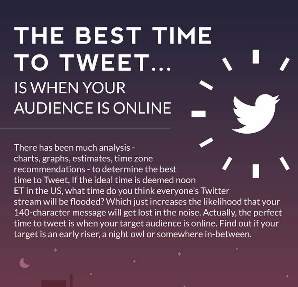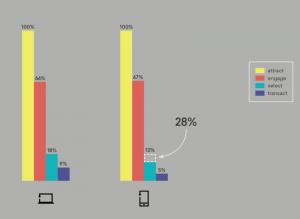As brick-and-mortar retail transforms to fit an increasingly online world, it can be a struggle for the average ecommerce store to keep up. One thing is clear — ecommerce isn’t going anywhere. In fact, analysts predict ecomm revenue will continue to soar through 2025.
Consumers are savvier than ever, sensitive to every part of your brand’s experience, and plagued by major decision fatigue. You might have exactly one second to capture their attention while they scroll through Instagram or open an email.
Meanwhile, you have an entire ecommerce website to run, orders to fulfill, shipments to manage, and strategic decisions at every turn. Marketing might be the last thing on your mind as a business owner.
The good news? Adding video to your website has been shown to improve conversions by nearly 80%. Video is a proven marketing tactic with major staying power, and that’s why we’re excited to partner with Vimeo to offer our users the ability to create and add videos directly from Constant Contact.
Keep reading to learn how creating videos for your ecommerce business can boost sales and increase brand awareness, plus everything you need to get started.
Table of Contents
- 7 tips for using video to sell more online
- 1. Make landing pages pop with product videos
- 2. Spruce up your email marketing
- 3. Let testimonials make the hard sell for you
- 4. Answer questions and address pain points directly
- 5. Increase time on site
- 6. Make shareable videos for social, then turn them into ads
- 7. Establish a personal connection by telling your story
7 tips for using video to sell more online
1. Make landing pages pop with product videos
57% of consumers say that product videos increase their confidence in a purchase. (That alone makes us pretty sure you should be using them on your website.) Product videos aren’t a monolith — you can customize them to meet your different marketing needs. Here are three of the most commonly used types of product videos:
- Explainers take their time going into the details of what your product does and what sets it apart from competitors. They’re designed for that person who wants to know everything before they buy.
- Comparison videos are ones that place you side-by-side with another product. Even though you might be (understandably!) biased toward your own goods, comparison videos are best when they show a dramatic difference between you and someone else on the market.
- Tutorials help show off your product in the video by showing its real-world application. Plus, depending on the tutorial, they can be easily repurposed into DIY style how-to videos to share on social.
2. Spruce up your email marketing
It’s estimated 306.4 billion emails were sent each day in 2020, so you may be wondering: how do I stand out?
We all love a good email: one that has a buzzy subject line that screams “click me!”, cool graphics and meaningful content, or announces a major sale at your favorite store. But that’s not always enough to drive a sale.
Adding video to your email marketing is like salting your food — a little goes a long way, and you’ll know the second you start overdoing it. Not every email needs a corresponding video, but here are a few times when it might help your ecommerce business:
- A new product launch or hotly-anticipated seasonal campaign
- An important announcement from a CEO or founder
- When you have a human-centered brand story to share (video can be a powerful way to form a relationship with your customers)
3. Let testimonials make the hard sell for you
It can be really hard to market yourself, especially if you’re just getting started in the ecommerce world. Like writing a killer resume, a great marketing strategy does require a little bit of bragging, especially if you’re doing something your competitors can’t do.
Enter testimonial videos. Using a testimonial video strategically in your marketing can offer multiple benefits for your ecommerce store:
- It establishes social proof, bolstering your credibility and centering your product or service as a perfect solution to a potential client’s need or desire
- A strategically placed testimonial video can drive a hesitant buyer further down the funnel, like on product pages where the next action you want them to take is that fateful click: “Add to Cart”
Plant-based granola bar Lupii does a great job at selling themselves by promoting their good press in this video:
Here are a few extra ways you can use testimonial videos to market your ecommerce business:
- Pepper in a testimonial video or two on your social feeds to show how much people love your store.
- Send a targeted email to users who abandoned their cart. (Using a testimonial-driven win back campaign can show them exactly what they’re missing out on!)
- Use someone else’s testimonial as a jumping off point to ask a new customer for their own review. (Bonus if you give them an incentive to write a review — talk about a loyalty-builder.)
4. Answer questions and address pain points directly
Now more than ever, transparency matters to consumers. People hold brands accountable and elevate business owners with a mission.
FAQ videos, tutorials, how-to guides are a great way to answer peoples’ questions about your products in an honest and engaging way. Here are a few ways your ecommerce store can use them in your marketing:
- Nest videos on product pages to explain any products the customer needs to assemble
- Include how-to videos in an email to the customer once their order ships
- Post on YouTube or Instagram Highlights so people can easily reference them when they need to
For example, furniture and interior design company Spoak Designs does this well in their tutorial video, where they run you through how to discover products through their website.
Sharing videos designed to solve your customers’ problems will show how much you care about their experience, which is always a good thing.
5. Increase time on site
Simply put: video has been found to increase time on site by up to 88%. That means stronger customer recall, better site stickiness, and ultimately, more sales.
In the marketing world, that’s a win-win(-win!) situation.
6. Make shareable videos for social, then turn them into ads
We’re all social creatures, and shopping from your phone — anytime, anywhere — means that you need to make an impression on all the major channels these days. Video tends to see higher engagement on platforms like Instagram, Twitter, and Pinterest: all places where your ecommerce products might make an appearance.
Videos posted organically on social media can also be retooled for paid advertising for platforms like Facebook and Instagram. Splice together pay-per-click ads from a product video, or turn a tutorial into a sponsored Instagram Story to get more bang for your buck.
7. Establish a personal connection by telling your story
Take Wild West Diner, for example, a small business using video to share their story and give viewers a sense of what they serve.
Telling your origin stories or brand purpose with a video will certainly jazz up your “About” page, and increase time a potential customer will spend there. Plus, weaving together the narrative of your ecommerce business will help you create a foundational marketing asset you can use again and again. Some ways to get more mileage out of an “About” video are:
- Use as short clips on social media to correspond with any human-centered announcement, like a specific partnership or initiative
- Weave into your job descriptions and hiring announcements to give potential employees a taste of your mission
- Share in a “Welcome” email to new prospects or customers who sign up to receive your emails
Get started using video marketing for your ecommerce store
It’s pretty crowded online these days, and a robust video marketing strategy is mission-critical to help your brand stand out. While it may seem intimidating to get started with video marketing, you don’t have to be a pro video editor to create ecommerce videos for every marketing channel and platform under the sun.
We’re living in a golden age of software and tools that make video marketing possible for all skill levels. You can deck out your website with a stunning homepage hero or a product demo in a few clicks (and some digital elbow grease), then sit back and watch those sales tick upward.
Digital & Social Articles on Business 2 Community
(87)






